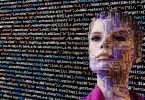SHANGHAI, China – With the popularization of knowledge on the online virtual money, more and more virtual money are produced. Since the Bitcoin made the Web money in fashion and gained global attention, the virtual money after Bitcoin were called “Copycat Coins”. While these virtual money use different names merely to differentiate with Bitcoin, like the different names of currencies in the real world, such as the US dollar, the Euro, etc.
In the year 2013, the virtual currency, led by Bitcoin, is booming around the globe, and saw a raise in price. Investors, including Chinese consumers, all reveled in it and wish to make a fortune in the popularity of the virtual currency. However, more and more governments and residents were beginning to worry about all sorts of potential risks in the globalization process of Bitcoin. With the development of Bitcoin, all kinds of virtual currencies emerge, which are often referred to as “Fake Currencies”. As for investors of virtual currencies, whether the virtual currency is reliable and formal is based on a traditional standard, that is, whether the source code and algorithm are open or not. If these are open to the public, then the currency is regarded as a formal one. If not, it belongs to the “Fake Currency”.
But the history of the virtual currency is also developing. It has been 5 years since the birth of Bitcoin in 2008, to the rise of various virtual currencies worldwide in 2014. In these 5 years, IT technologies advanced rapidly. The enormous investment return has also attracted some hackers. With their strong computer skills, they cracked and stole various virtual currencies in order to gain huge benefits. In February 2014, 850,000 Bitcoins were stolen from the world’s biggest Bitcoin exchange operator Mt.Gox. The loss topped $470 million according to the prevailing price of Bitcoin. Therefore, the protection of source code has been the focus in the recent development of virtual currencies, so as to protect the interest of customers and ensure the fairness of the entire virtual currency market. The Ripple appeared in early 2004. Although the emergence of the Ripple far exceeded Bitcoin, it has not been massively developed worldwide due to its special calculation method, and the level of acknowledgment is far below Bitcoin. By 2012, the Ripple will become known to the world. However, from the beginning, Ripple did not released the source code. Therefore, it is frequently criticized by investors and consumers. The Ripple decided to open its source code in September 2013 after it began to exert influence in the world in 2013. The reasons behind such a long time is firstly, the protection measures to protect Ripple from the hackers’ attacks, and secondly, the protection ways so as to avoid the market turmoil due to earlier attacks.
For most investors and customers, the traditional rules for a virtual currency are: one, the algorithm of the virtual currency must be open on the Internet first; two, it is logged onto a mainstream trading stage to do fair and reasonable distribution; and three, it is consistent with the development process of a formal virtual currency. But in the real market, the game rules like these are facing their own difficulties and are resisted by various kinds of virtual currencies. They expect more in the early stages of market development to cultivate the market first and then publish the source code.
It is understood that another kind of Virtual Currency, vpal, which is hot recently, will release its source code in October, before which vpal hasn’t received any criticism from investors due to its unresponsive release of source code.
Deputy general manager of Shanghai Shenhang Cci Capital Ltd. Wang Shouchai said: “As people’s awareness of virtual currencies increased and the development tend of these currencies becomes more rational, releasing source code openly or not will not be the only criterion to judge the normalization of a virtual currency. Thus people will treat the development of Virtual Currency more rationally and comprehensively.”






















